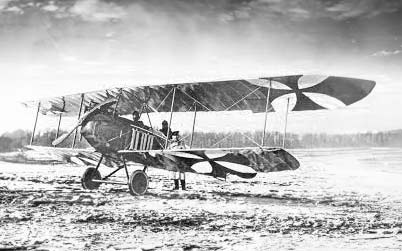Check out the history and technical nuances of the Aviatik B.I, an early WWI German reconnaissance aircraft, exploring its design, performance, and military applications.
The Aviatik B.I, developed in the early stages of WWI, showcased German prowess in aviation. Its distinct design and noteworthy performance played a crucial role in early reconnaissance missions, marking its significance in early air campaigns. As World War I raged on, the world of military aviation was evolving at an unprecedented pace. Among the aircraft that carved a niche during this era was the Aviatik B.I, a key player in Germany’s early reconnaissance arsenal.
History of the Development of the Aviatik B.I
The nascent stages of WWI saw a burgeoning demand for reliable aerial reconnaissance. The need to gather intelligence from the air was crucial to planning ground strategies. Recognizing this, Germany sought to bolster its fleet with efficient aircraft.
The Aviatik B.I was born out of this demand. Developed by Automobil und Aviatik AG, it took flight for the first time in 1914. This timing coincided with the first major clashes of the war, making its introduction timely and pertinent.
The Aviatik B.I was primarily devised for observation and intelligence-gathering, with initial versions being unarmed. As for a NATO nickname, the aircraft predates NATO by several decades and thus, didn’t receive a NATO designation.
Design of the Aviatik B.I
Constructed as a two-seater biplane, the Aviatik B.I possessed a wingspan of approximately 14.2 meters (about 46.6 feet) and measured 8.5 meters (28 feet) in length. Powering this aircraft was a Mercedes D.I inline engine.
The pilot and observer sat tandem, with the observer seated ahead, granting them an uninterrupted field of vision, essential for spotting and observation duties. However, this setup, similar to some contemporaries, posed communication challenges between the crew, a limitation in real-time operations.
Despite being a relatively simple construction, the Aviatik B.I exhibited commendable sturdiness, an attribute that played well in the rough and often unpredictable wartime conditions.

Performance of the Aviatik B.I
The Aviatik B.I’s Mercedes D.I engine propelled it to speeds of around 85 km/h (approximately 53 mph). The aircraft’s optimal operational altitude hovered around 2,500 meters (8,200 feet) with a range nearing 250 kilometers (155 miles).
In comparison to other reconnaissance planes of its time, like the French Caudron G.3, the Aviatik B.I was marginally slower. However, its durability and ease of handling gave it an edge, making it a reliable asset for prolonged observation missions.
Military Use and Combat of the Aviatik B.I
Designed predominantly for reconnaissance, the Aviatik B.I was initially unarmed, placing an emphasis on stealth and evasion. However, as aerial warfare evolved, the need for armed observation aircraft grew, leading to some B.I units being equipped with handheld weapons for defense.
Its reconnaissance contributions during the early years of the war were invaluable, especially on the Eastern Front. However, as more advanced and aggressive aircraft entered the fray, the Aviatik B.I’s frontline role diminished.
No records suggest significant exports to other nations. By the end of the war, with the arrival of superior aircraft designs, the Aviatik B.I was largely retired from frontline service.
The Aviatik B.I serves as a testament to the rapid advancements in aviation during WWI. As an early reconnaissance workhorse for Germany, it underscored the escalating significance of aerial intelligence in modern warfare. While it was eventually outpaced by newer models, its contributions in shaping the air campaigns of the war’s early days remain etched in history.
Back to the Spy Planes section.